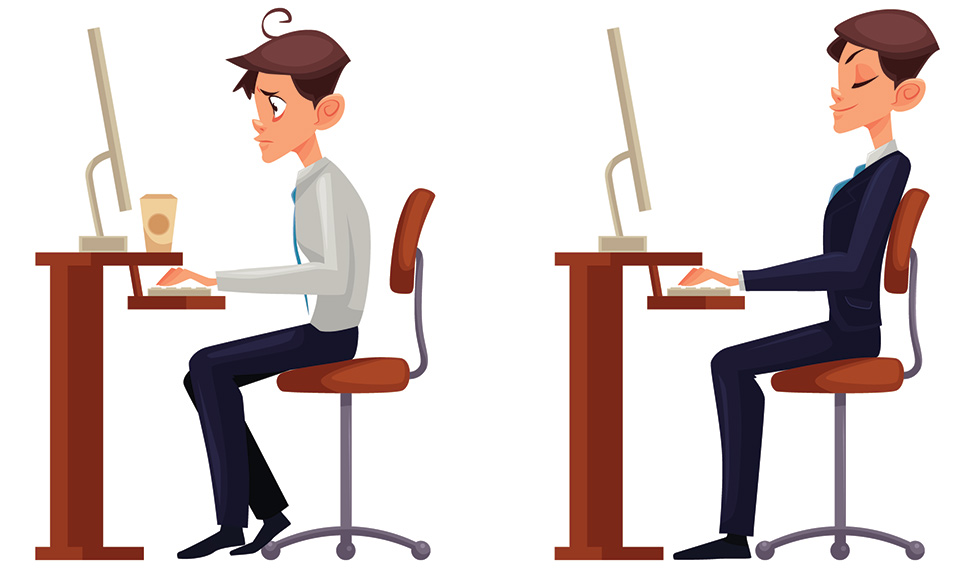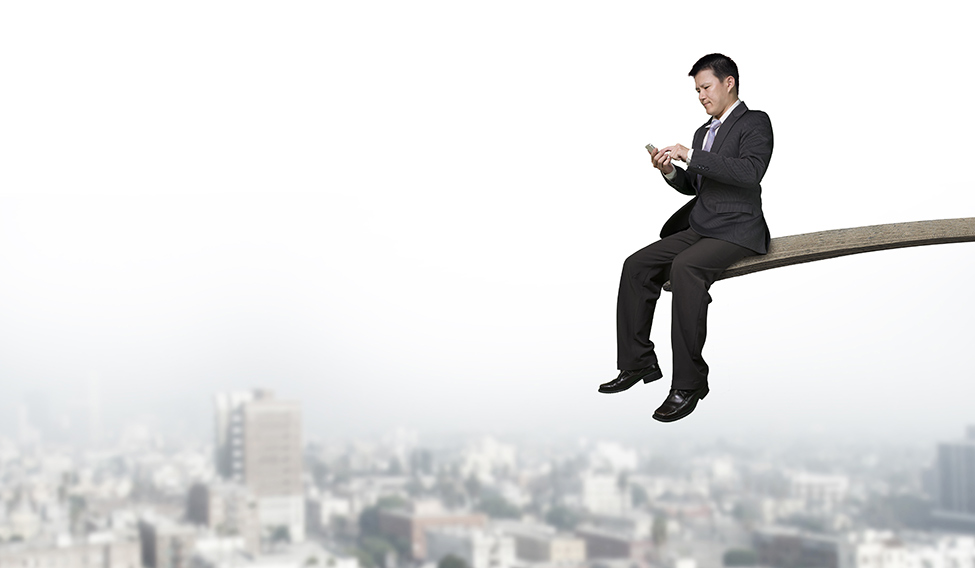How many times have you caught yourself admiring the elders in the family who seem to be standing tall, walking briskly and rarely, if ever, complaining of headaches or overall body pain? What seems to have changed from one generation to the other? The answer is simple: technology. A generation or two ago, people did not spend most of their waking time slouching over a laptop or a phone, all in a bid to stay connected.
One of the hazards of progress has been the inability to disconnect from the online world. What this has resulted in, is a new range of postural ailments that can have severe consequences, if ignored.
“With computers becoming integral to the workplace, the ill-effects of sitting have become evident, leading to a host of postural ailments,” says Dr Shiv Bajaj, a chiropractic and founder of Back2Health Clinic and Back2Health Lifestyle Store in New Delhi. He is also an acupuncturist and is currently developing a posture app, which is expected to launch this year.

Pain in the neck
Most of the postural problems occur over a period of time and, as medical experts say, can be largely attributed to remaining in the same position for long durations. As technology evolved, so did the type of strain our bodies endured. “The deactivation of the abdominal region, slumping of the middle back and anterior head carriage or forward head posture are classic postural alterations,” says Shiv. The use of laptops has increased the incidence of neck problems and repetitive stress injuries of the upper limb. Smartphones further accentuated neck disorders as the tendency is always to look downward to the phone screen.
“Common problems we see, particularly in young adults, are Upper Traps spasms (spasms in the muscle in the base of the back of the neck), fibromyalgia and carpal tunnel syndrome,” says Dr Jason Anthony Furtado, head of department of physiotherapy and rehabilitation, coordinator for paramedical and technical services, St. Martha’s Hospital, Bengaluru. “Besides this, cervicogenic headaches (secondary headache caused by bad posture), lower back pain and ischial bursitis (pain in the hip and buttock region caused by damage to the bursa, a sac filled with lubricating fluid) cases are emerging because of faulty postures,” he says. Jason believes that with different gadget sizes from mobiles to smartphones, tablets, netbooks, laptops to the desktops and even the recent phablets, each category of devices has its associated musculo-skeletal problems from grip circumference to weight of the laptop sling bag.
A painful condition that is now commonly seen in many people is tech neck. “We can see people hunched over their smartphones with shoulders and neck strained and thumbs continuously moving. This position, with head hanging, shoulders hunched and eyes glued to the device is called a tech neck,” explains Dr Mohan Thomas, senior cosmetic surgeon, Breach Candy Hospital and The Cosmetic Surgery Institute, Santacruz, Mumbai. He says that this causes a lot of harm to the face of the person, leading to frown lines, under-eye bags, horizontal lines on the neck along with fat prominences, not to mention the associated pain in the neck.
According to Mohan, the newest entrant in the world of problems associated with technology, along with headache and numbness in the arms, is the appearance of a crease just above the collar bone from repeated use of devices in a bending down position. This is called the tie line. Youngsters are also dealing with sagging jowls and wrinkled necks because of the use of digital devices.
Suffice to say that use of technology causes a lot of harm, and bad posture can lead to many medical conditions. Wrong posture plays a significant role in not only cosmetic abnormalities, but in spinal pain as well as conditions such as reduced lung capacity, hypertension, altered digestive function and even psychological conditions such as depression and anxiety.

Fixing the problem
Office work can be gruelling and, many a time, will have you rooted to one spot. “The most important thing done wrong by people is remaining in a single position for a long time,” says Dr Tejas D. Upasani, joint replacement surgeon, Upasani Hospital, Mulund, Mumbai. “It is important to take regular breaks while working on computers and keep the computer or laptop screen at eye level.”
Preventing posture-related pain is not simply achieved by doing a set of exercises but by paying attention to proper posture and positions for majority of the day, believes Shiv. An ergonomically built workstation, laptop and bookstand ensure reading angles are neutral. Using earphones ensures the arm is not kept raised to hold the phone to the ear for long. Strain to the neck can be avoided by keeping the phone at a 90-degree angle or in line with the eyes. Exercises can also help improve posture.
Says Mohan, “Poor neck posture leads to a forward head position, which is one of the most common causes of neck, head and shoulder tension and pain. This can be a result of injuries like sprains and strains of the neck leading to weak neck muscles and problems sleeping. These are usually related to using the computer and smartphone for a long time.”
Grand Master Akshar, founder of Akshar Yoga, suggests a combination of asanas like Padahastasana and Ashwasanchalanasana to help achieve balance between human beings and machines and reduce the strain on the body. These asanas are also part of Surya Namaskar.
It is important to take time out to pay attention to our bodies. It is also important to understand how the body is hurt by the use of modern-day technology. All you need to do is take notice and do what is right for you.

Prevent tech neck
Dr Mohan Thomas suggests a few simple measures:
- Follow a healthy well-balanced calorie-restricted diet.
- Reduce the use of digital devices as much as possible. Make a phone call instead of texting.
- Reduce the load on the neck, raise the device up:
On to the table in cafes
In front of you on trains and planes
On cushions on your lap at home
On a stand in the office
- Do cardio exercises to relieve the strain in the tired muscles of the neck and upper back. This has to be combined with full-body exercises.









